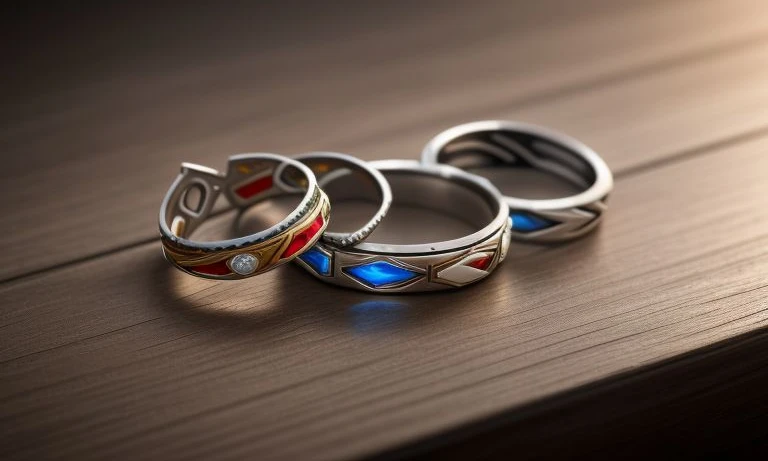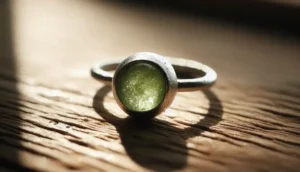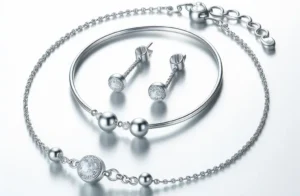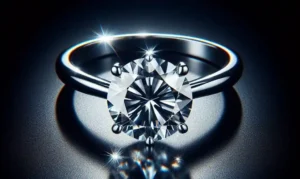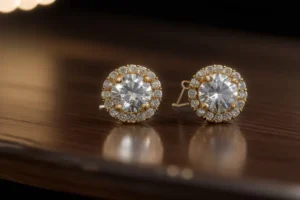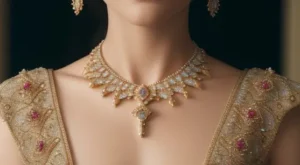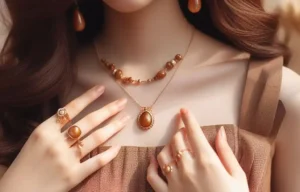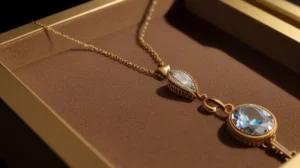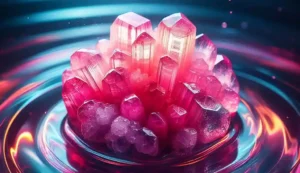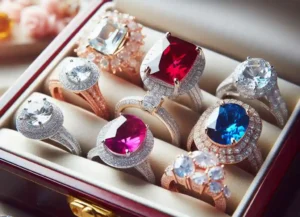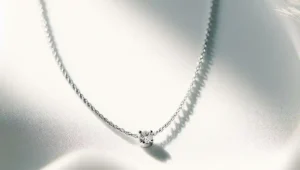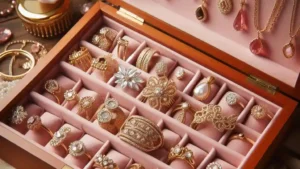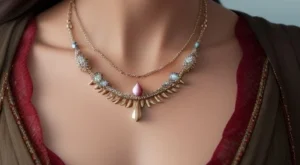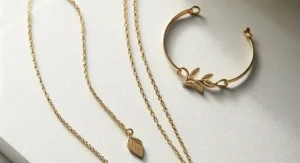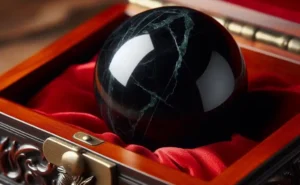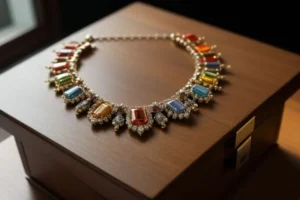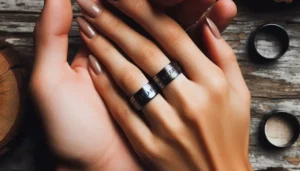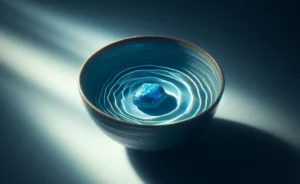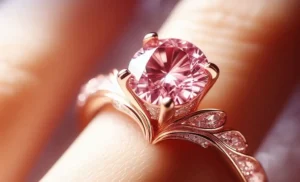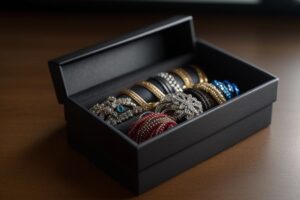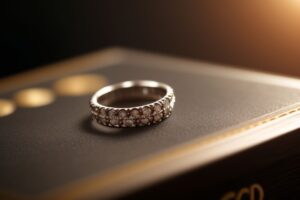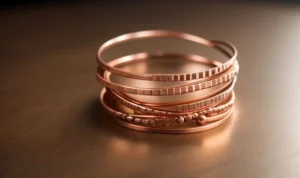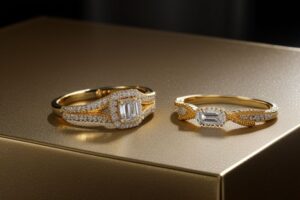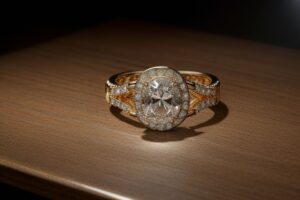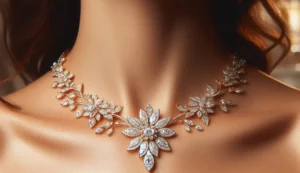Does Steel Jewelry Tarnish: Delving into the world of jewelry, you might have encountered the term ‘tarnishing’ and wondered what it entails.
Specifically, the question may have crossed your mind, “Does steel jewelry tarnish?”
In this article, we’ll be putting our detective hats on to answer that question and to expose the truth about the durability and longevity of steel jewelry.
Does Steel Jewelry Tarnish?
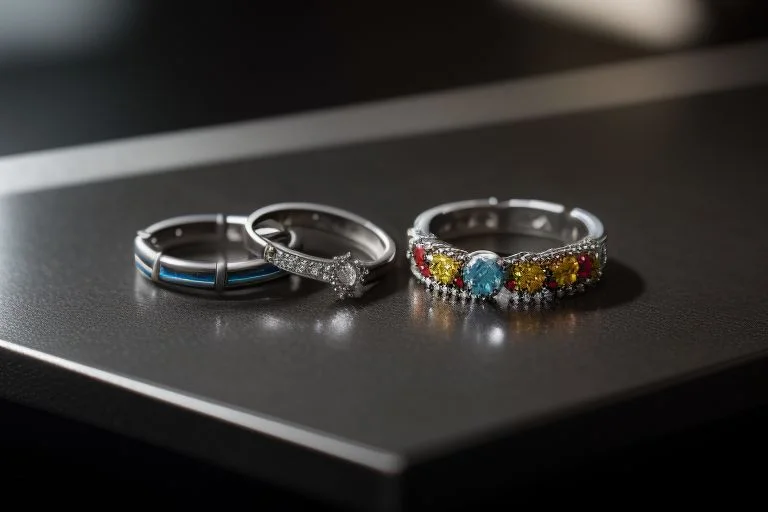
Typically, steel jewelry does not tarnish. This trait largely stems from the composition of steel, which is primarily an alloy consisting of iron, carbon, and other elements such as chromium, nickel, and molybdenum.
Chromium in steel, especially stainless steel, forms a protective layer that safeguards the underlying metal from exposure to elements like air and moisture that instigate tarnishing in other metals.
This protective layer maintains the luster and shine of the steel, making it resistant to the dulling and discoloration associated with tarnishing. However, it’s important to recognize that steel jewelry may show signs of discoloration or dulling under certain conditions, such as exposure to harsh chemicals or salt water.
The quality of the steel also plays a role, with lower-grade steel or pieces containing higher amounts of tarnish-prone metals possibly showing signs of tarnish-like discoloration. So, while steel jewelry is generally resistant to tarnishing, it’s not entirely tarnish-proof.
Understanding What Tarnishing Means

In the realm of jewelry, tarnishing is a term that’s often thrown around, but what does it truly signify? Essentially, tarnishing is a process that involves the formation of a thin layer of corrosion on certain types of metals, such as silver and copper.
This layer forms due to a chemical reaction that the outermost layer of these metals undergo with exposure to elements such as air or moisture. This reaction leads to a dulling or discoloration of the metal surface, which can greatly impact the visual appeal of the jewelry.
It’s akin to a patina that forms on a once-bright surface, reducing its shine and altering its hue. The tarnishing process, therefore, affects the aesthetic qualities of the jewelry, potentially diminishing its sparkle and vibrancy over time.
It’s worth noting, though, that while tarnishing changes the appearance of a piece of jewelry, it does not generally affect its structural integrity. However, it is still something that many jewelry enthusiasts aim to prevent or delay, as the beauty of a piece often lies in its shiny and unblemished appearance.
Analyzing the Composition of Steel Jewelry
Steel’s anti-tarnish properties can be attributed largely to its unique composition. It is primarily an alloy with iron and carbon at its core, but it often features additional elements that enhance its durability. The main game-changer in this mix is chromium. Particularly in stainless steel, the chromium content is at least 10.5%.
This essential component forms a protective layer on the steel surface that is invisible to the naked eye. This layer acts as a barrier, shielding the underlying metal from exposure to the elements that can lead to tarnishing and rust.
This fortification strategy employed by chromium allows steel, especially stainless steel, to maintain its luster and shine even when exposed to environments that typically cause other metals to tarnish.
Nickel and molybdenum are other elements often found in steel alloys that contribute to its strength and corrosion resistance. In summary, the unique blend of elements within its alloy structure fortifies steel, making it resistant to the dulling and discoloration associated with tarnish.
Conditions That May Cause Steel Jewelry to Tarnish
It is important to note that while steel jewelry is typically robust against tarnishing, certain conditions may challenge this resistance. Exposure to environments or substances with harsh chemical compositions can potentially instigate discoloration or surface damage, thus imitating the look of tarnish.
For instance, the chlorine in swimming pools or the high salt content in seawater can cause changes in the jewelry’s appearance over time.
Additionally, the quality of the steel can play a pivotal role. Lower-grade steel jewelry or pieces that contain an amalgamation of other metals more susceptible to tarnishing might betray signs of discoloration or dulling.
This is often seen in pieces where the steel alloy includes a higher percentage of tarnish-prone metals such as copper or nickel.
Therefore, while steel jewelry is generally resilient, it’s not completely tarnish-proof. An understanding of these potential challenges can help you in making informed decisions about care and maintenance to keep your steel jewelry looking its best.
The Difference Between Steel Jewelry and Other Metals
When assessing the difference between steel jewelry and jewelry made from other metals, a significant point of comparison lies in their resistance to tarnishing. Certain metals like silver are notoriously prone to tarnishing.
Similarly, copper and brass tend to discolor over time due to their interaction with air and moisture. On the other hand, metals such as gold and platinum are known for their superior tarnish resistance, a trait they share with steel.
However, the higher cost associated with gold and platinum jewelry can be a deterrent for many, which is where steel presents an appealing alternative. It offers the same glossy finish and lustrous appearance that these expensive metals do, without the hefty cost or intensive care regime.
It’s also worth noting that the durability and longevity of steel jewelry surpass many of its counterparts, provided that the steel is of high quality. Thus, steel jewelry becomes a suitable option for those seeking durability, aesthetic appeal, and cost-effectiveness.
Keep in mind, though, that even steel jewelry can face challenges when exposed to harsh chemicals or salty water. These factors should be taken into consideration while deciding on the type of jewelry that best suits your needs and lifestyle.
Maintaining the Shine and Luster of Steel Jewelry
Though steel jewelry is known for its hardiness, a certain level of care will keep its shine intact and enhance its longevity. Consistent cleaning is a must, and the process is fairly simple. A mixture of mild soap and water can serve as an effective cleaning solution.
Gently clean your jewelry using a soft cloth or brush, ensuring all surfaces are covered. Rinse thoroughly to ensure no soap residue is left. Remember to dry it completely before storing to prevent moisture-related issues.
While the resistance to tarnish of steel jewelry is commendable, exposure to certain environments can potentially affect its appearance. Hence, it’s best to remove your steel jewelry before plunging into a swimming pool or taking a dip in the sea. The chemicals in pool water and the salt in sea water can cause surface damage that may mimic tarnishing.
Storage also plays a significant role in maintaining your jewelry’s luster. Stash your pieces in a cool and dry location, away from harsh chemicals or abrasive substances that could affect their shine. By taking these simple measures, you can ensure that your steel jewelry remains as dazzling as the day you first wore it.
The Role of High-Quality Steel in Jewelry Longevity
The caliber of steel used in jewelry has a direct bearing on its longevity and resistance to tarnishing. Not all steel is created equal and certain grades offer enhanced durability and tarnish resistance. A prime example is 316L grade stainless steel, renowned for its exceptional resistance to rust, corrosion, and tarnishing.
Selecting jewelry made of high-quality steel not only ensures its enduring shine but also adds years to its life span. The added advantage of high-grade steel is that it requires minimal maintenance, making it a practical choice for everyday wear.
Investing in quality pieces from the start ensures your jewelry will stand the test of time, maintaining its aesthetic appeal without requiring frequent and tedious care routines. To conclude, the selection of high-quality steel is a crucial factor in guaranteeing the longevity of your jewelry and preserving its lustrous appearance.

